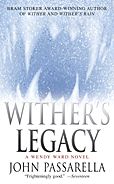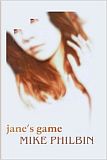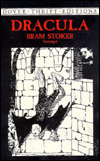
Palindrome Hannah, by Michael Bailey
Book Review by C. Dennis Moore
Have you read this book?
A palindrome is a word or phrase that reads the same forward or backward, such a "bob," "dad," "if I had a hi-fi," "pull up if I pull up," or "Hannah."
Michael Bailey's Palindrome Hannah is an ambitious novel that I don't think is quite as "daring" or "experimental" as the author had hoped. The back cover copy promises five interwoven stories with a hidden sixth story, told in reverse. While that's true, I wouldn't go so far as to make a big deal out of it. The "hidden sixth story" is really nothing more than references to one particular character who is mentioned in one way or another in all five stories. Since this character, Julie, works in a Home Depot in the first story and is about to start working in a Home Depot in the last story, I guess you could say her story is told in reverse. However, the events in the first four stories take place in order, so obviously, references to Julie in these stories must also be in chronological order.
The stories in Palindrome Hannah are set in Seattle, or Brendan, which I assume is a suburb. I don't think it's ever really stated for sure. The characters of each story are indeed woven together in very interesting ways and it was fun to try to find the connections, like in the movie "Magmolia" where you don't really know what the whole point of the thing is, but it's fun to see how the seemingly unconnected lives connect.
In the first story, "Reflections," Aeron is facing a demon in his mirror as his life rockets on that downward spiral Trent Reznor loves so much. Suicide, Aeron decides, is the only answer. The imagery in this story was great, and definitely the way to start this collection.
In "Pumpkin Carving," Tayson and his wife, Jackie, are in a loveless marriage, but neither wants to concede and be the one to say the "D" word. Jackie's got a little side business going, based in a run-down house on the outskirts of town beside a dead field full of bodies. Tayson and Jackie are both completely unlikable characters and I didn't feel one bit of sorrow for either of them, ever.
In "The Whiteness," Earl Heimlich is recounting his years growing up in an orphanage in the 1920s, one of those places you just don't want to believe exists, where the children are given one set of clothing to last them the year and they sleep on concrete. The "caretakers" are murderous, coke-sniffing bullies and friendship between the children is discouraged. Earl and his best friend Eddie survive the hardships and eventually escape Westbury, their personal Hell on Earth.
"Finding God" is the story of Dr. Milton and his attempts to understand his patient, a John Doe who insists he's God.
And finally, "Inside/Outside" is about a group of friends who decide to play a little prank on the school bully, give him a dose of humility before he grows up and becomes a real monster.
The stories in Palindrome Hannah, taken one by one, are good stories, interesting premises and I was definitely drawn into each and every one, but I think there were places where Bailey was reaching a little bit to make those story to story connections, which makes me wonder what came first, the individual stories, or the book? Did he have an idea to write a series of stories he could tie together, and then had to come up with the stories, or where the stories already written, and the connections only made later during a sometimes uninspired revision?
Doesn't matter.
Let me get to Hannah, the palindrome baby. Julie, who I mentioned earlier, she works at Home Depot, is in her late teens, she had Hannah, her three-year-old daughter, when she was 14 or 15. Julie loves Hannah, she works her Home Depot shift and also strips at night to support her daughter. Julie is the common law daughter of Earl from "The Whiteness", taken in as his own even though Julie has no real family of her own, and Hannah is given a brief mention in the story. The John Doe in "Finding God" turns out to be Julie's long lost uncle John and Hannah is again mentioned in one scene in the story.
So, uh, let's name a whole book after her and make her seem like a big deal to the story when in reality we could have not even had a child and the whole thing would have been pretty much the same thing without her. Like I said, I don't think it was quite what the author was going for.
But overall, I enjoyed the stories, even if the prose in some places hit first draft bottom--much of Earl's story, had a very different feel to it than the other four stories. Granted, "The Whiteness" was written in first person from the point of view of a very old man, but it was more than that, it all felt very amateurish, even switching from past to present tense in the middle of a scene a few times. And whereas the other four stories drew me into their worlds, I didn't get that from "The Whiteness", mostly because I just couldn't accept just how bad the conditions in the orphanage were; they weren't realistic bad, they were cheap TV-movie bad, worse than that, even.
Palindrome Hannah is an interesting study of just how events can intersect and bring together people and lives that otherwise would probably never come together, and I definitely admire what Bailey's created here. I just don't know if I'd say it's necessarily a "horror novel" or even if it's a GREAT BOOK. It's an interesting book, mostly well-told, and it held my interest. Is that good enough?
Michael Bailey's Palindrome Hannah is an ambitious novel that I don't think is quite as "daring" or "experimental" as the author had hoped. The back cover copy promises five interwoven stories with a hidden sixth story, told in reverse. While that's true, I wouldn't go so far as to make a big deal out of it. The "hidden sixth story" is really nothing more than references to one particular character who is mentioned in one way or another in all five stories. Since this character, Julie, works in a Home Depot in the first story and is about to start working in a Home Depot in the last story, I guess you could say her story is told in reverse. However, the events in the first four stories take place in order, so obviously, references to Julie in these stories must also be in chronological order.
The stories in Palindrome Hannah are set in Seattle, or Brendan, which I assume is a suburb. I don't think it's ever really stated for sure. The characters of each story are indeed woven together in very interesting ways and it was fun to try to find the connections, like in the movie "Magmolia" where you don't really know what the whole point of the thing is, but it's fun to see how the seemingly unconnected lives connect.
In the first story, "Reflections," Aeron is facing a demon in his mirror as his life rockets on that downward spiral Trent Reznor loves so much. Suicide, Aeron decides, is the only answer. The imagery in this story was great, and definitely the way to start this collection.
In "Pumpkin Carving," Tayson and his wife, Jackie, are in a loveless marriage, but neither wants to concede and be the one to say the "D" word. Jackie's got a little side business going, based in a run-down house on the outskirts of town beside a dead field full of bodies. Tayson and Jackie are both completely unlikable characters and I didn't feel one bit of sorrow for either of them, ever.
In "The Whiteness," Earl Heimlich is recounting his years growing up in an orphanage in the 1920s, one of those places you just don't want to believe exists, where the children are given one set of clothing to last them the year and they sleep on concrete. The "caretakers" are murderous, coke-sniffing bullies and friendship between the children is discouraged. Earl and his best friend Eddie survive the hardships and eventually escape Westbury, their personal Hell on Earth.
"Finding God" is the story of Dr. Milton and his attempts to understand his patient, a John Doe who insists he's God.
And finally, "Inside/Outside" is about a group of friends who decide to play a little prank on the school bully, give him a dose of humility before he grows up and becomes a real monster.
The stories in Palindrome Hannah, taken one by one, are good stories, interesting premises and I was definitely drawn into each and every one, but I think there were places where Bailey was reaching a little bit to make those story to story connections, which makes me wonder what came first, the individual stories, or the book? Did he have an idea to write a series of stories he could tie together, and then had to come up with the stories, or where the stories already written, and the connections only made later during a sometimes uninspired revision?
Doesn't matter.
Let me get to Hannah, the palindrome baby. Julie, who I mentioned earlier, she works at Home Depot, is in her late teens, she had Hannah, her three-year-old daughter, when she was 14 or 15. Julie loves Hannah, she works her Home Depot shift and also strips at night to support her daughter. Julie is the common law daughter of Earl from "The Whiteness", taken in as his own even though Julie has no real family of her own, and Hannah is given a brief mention in the story. The John Doe in "Finding God" turns out to be Julie's long lost uncle John and Hannah is again mentioned in one scene in the story.
So, uh, let's name a whole book after her and make her seem like a big deal to the story when in reality we could have not even had a child and the whole thing would have been pretty much the same thing without her. Like I said, I don't think it was quite what the author was going for.
But overall, I enjoyed the stories, even if the prose in some places hit first draft bottom--much of Earl's story, had a very different feel to it than the other four stories. Granted, "The Whiteness" was written in first person from the point of view of a very old man, but it was more than that, it all felt very amateurish, even switching from past to present tense in the middle of a scene a few times. And whereas the other four stories drew me into their worlds, I didn't get that from "The Whiteness", mostly because I just couldn't accept just how bad the conditions in the orphanage were; they weren't realistic bad, they were cheap TV-movie bad, worse than that, even.
Palindrome Hannah is an interesting study of just how events can intersect and bring together people and lives that otherwise would probably never come together, and I definitely admire what Bailey's created here. I just don't know if I'd say it's necessarily a "horror novel" or even if it's a GREAT BOOK. It's an interesting book, mostly well-told, and it held my interest. Is that good enough?
|
Click here to buy Palindrome Hannah, by Michael Bailey on Amazon
|
Palindrome Hannah, by Michael Bailey on Amazon

| More Books You Might Like |
Comment on Palindrome Hannah, by Michael Bailey



